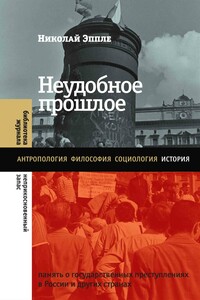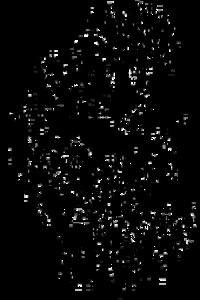McLuhan M. Understanding Media: The Extensions of Man. New York: McGraw-Hill, 1964.
Messner M. A. When Bodies Are Weapons: Masculinity and Violence in Sport // International Review for the Sociology of Sport. 1990. Vol. 25. № 3. P. 203–220.
Mickiewicz E. P. Split Signals: Television and Politics in the Soviet Union. New York: Oxford University Press, 1988.
Miller D. Material Culture and Mass Consumption. Social Archaeology. Oxford: Blackwell, 1987.
Mogilner M. Homo Imperii: A History of Physical Anthropology in Russia. Lincoln: University of Nebraska Press, 2013.
Muratov S. Soviet Television and the Structure of Broadcasting Authority // Journal of Communication. 1991. Vol. 41. № 2. P. 172–184.
Okabe T. Negotiating Elias Lönnrot: Shared Soviet-Finnish National Symbol Articulated and Blurred, 1945–1952 // Nordic Historical Review, special issue «Language and Border between Scandinavia and Russia» / ed. A. Golubev, A. Räihä, A. Tolstikov. 2015. № 2. P. 129–149.
Oushakine S. «Against the Cult of Things»: On Soviet Productivism, Storage Economy, and Commodities with No Destination // Russian Review. 2014. Vol. 73. № 2. P. 198–236.
Oushakine S. The Patriotism of Despair: Nation, War, and Loss in Russia. Ithaca, NY: Cornell University Press, 2009.
Palmer S. W. Dictatorship of the Air: Aviation Culture and the Fate of Modern Russia. Cambridge: Cambridge University Press, 2006.
Paretskaya A. A Middle Class without Capitalism? Socialist Ideology and Post-Collectivist Discourse in the Late-Soviet Era // Soviet Society in the Era of Late Socialism, 1964–1985 / ed. N. Klumbyté, G. Sharafutdinova. New York: Lexington Books, 2013. P. 43–66.
Pearson D. New Organic Architecture: The Breaking Wave. Berkeley: University of California Press, 2001.
Pilkington H. Russia’s Youth and Its Culture: A Nation’s Constructors and Constructed. London: Routledge, 1994.
Pinsky A. The Diaristic Form and Subjectivity under Khrushchev // Slavic Review. 2014. Vol. 73. № 4. P. 805–827.
Raibmon P. Authentic Indians: Episodes of Encounter from the Late-Nineteenth-Century Northwest Coast. Durham: Duke University Press, 2005.
Raleigh D. Russia’s Sputnik Generation: Soviet Baby Boomers Talk about Their Lives. Bloomington: Indiana University Press, 2006.
Ramet S. P. UFOs over Russia and Eastern Europe // Journal of Popular Culture. 1998. Vol. 32. № 3. P. 81–99.
Reid S. E. Cold War in the Kitchen: Gender and the De-Stalinization of Consumer Taste in the Soviet Union under Khrushchev // Slavic Review. 2002. Vol. 61. № 2. P. 211–252.
Reid S. E. Everyday Aesthetics in the Khrushchev-era Standard Apartment // Everyday Life in Russia: Past and Present / ed. C. Chatterjee, D. L. Ransel, M. Cavender, K. Petrone. Bloomington: Indiana University Press, 2015. P. 203–233.
Reid S. E. Khrushchev Modern: Agency and Modernization in the Soviet Home // Cahiers Du Monde Russe. 2006. Vol. 47. № 1/2. P. 227–268.
Reid S. E. The Meaning of Home: «The Only Bit of the World You Can Have to Yourself» // Borders of Socialism: Private Spheres of Soviet Russia / ed. L. Siegelbaum. New York: Palgrave Macmillan, 2006. P. 145–170.
Reid S. E. Who Will Beat Whom? Soviet Popular Reception of the American National Exhibition in Moscow, 1959 // Kritika: Explorations in Russian and Eurasian History. 2008. Vol. 9. № 4. P. 855–904.
Remnick D. Lenin’s Tomb: The Last Days of the Soviet Empire. New York: Vintage Books, 1994.
Rivkin-Fish M. Women’s Health in Post-Soviet Russia: The Politics of Intervention. Bloomington: Indiana University Press, 2005.
Rolf M. Soviet Mass Festivals, 1917–1991. Pittsburgh: University of Pittsburgh Press, 2013.
Romberg K. Gan’s Constructivism: Aesthetic Theory for an Embedded Modernism. Berkeley: University of California Press, 2018.
Roth-Ey K. Moscow Prime Time: How the Soviet Union Built the Media Empire That Lost the Cultural Cold War. Ithaca, NY: Cornell University Press, 2011.
Rotkirch A. The Man Question: Loves and Lives in Late 20th Century Russia. Helsinki: University of Helsinki – Department of Social Policy, 2000.






